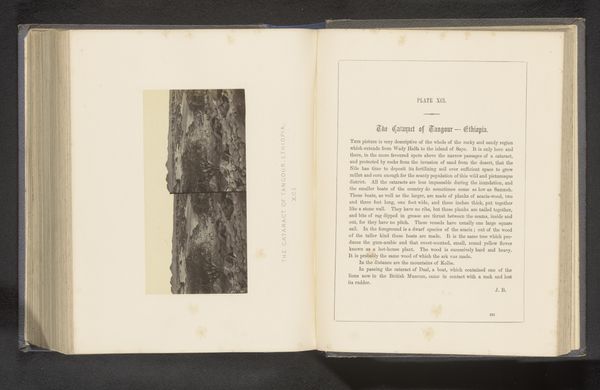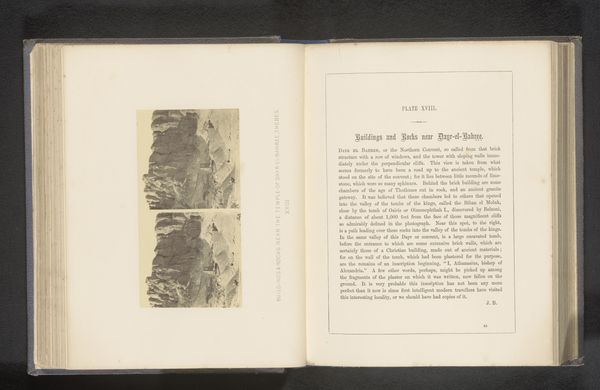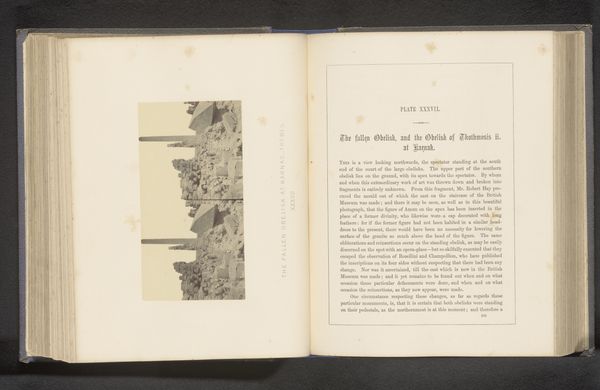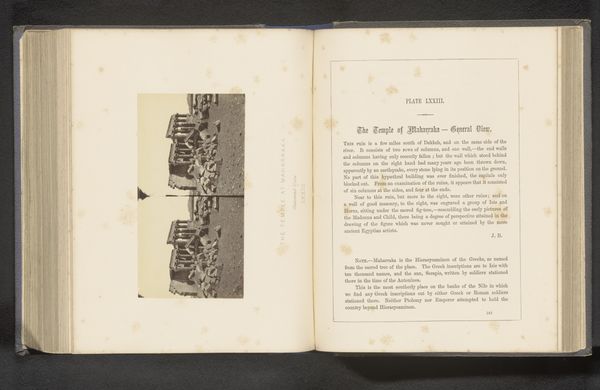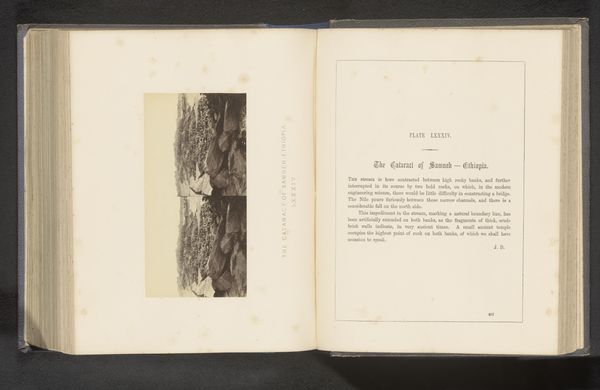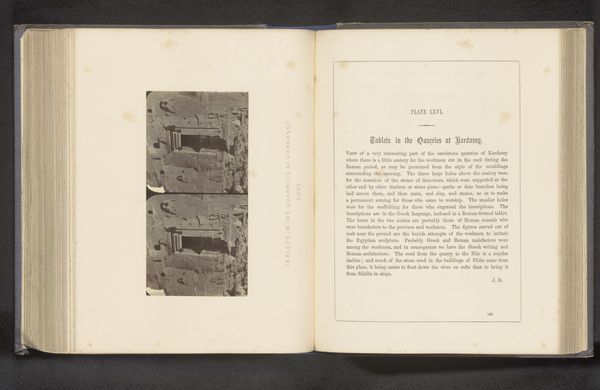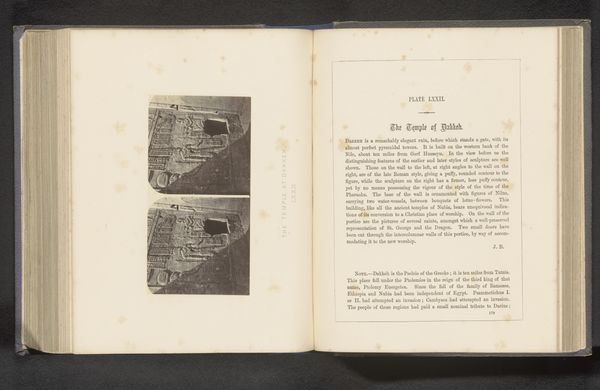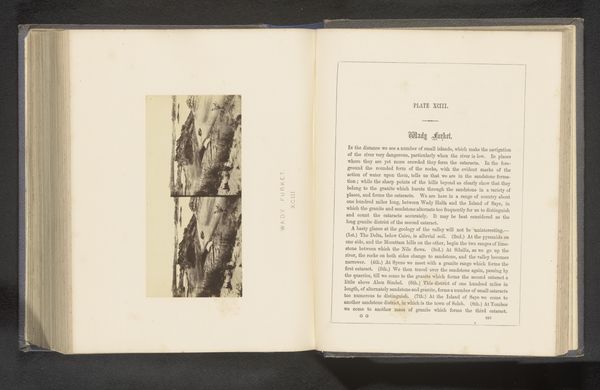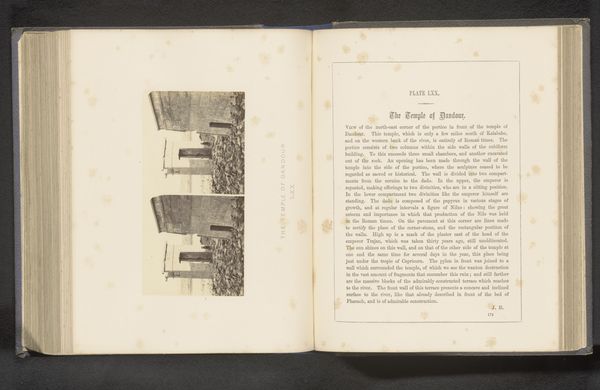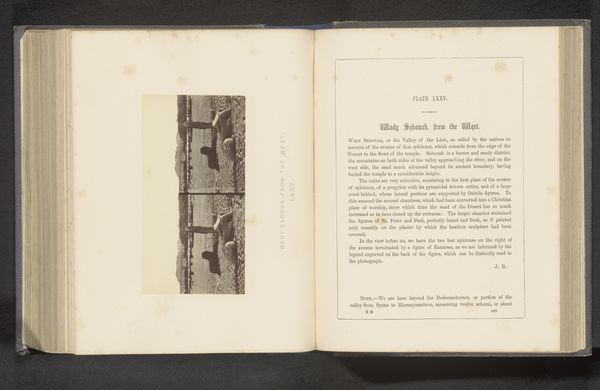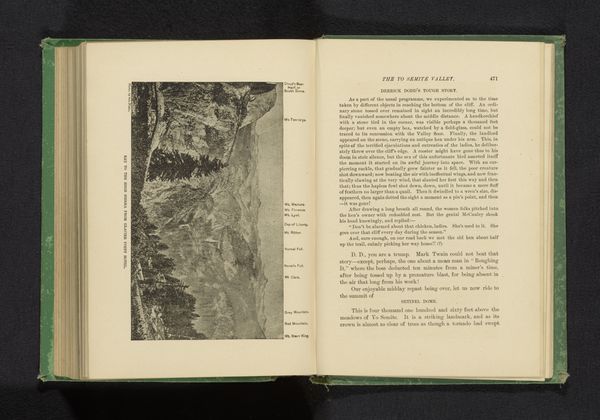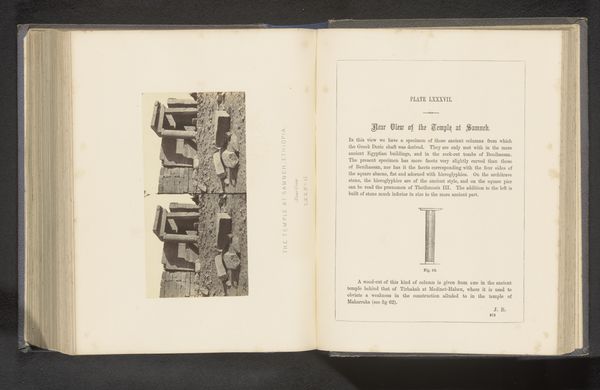
photography, albumen-print
#
paper non-digital material
#
landscape
#
ancient-egyptian-art
#
photography
#
ancient-mediterranean
#
albumen-print
Dimensions: height 76 mm, width 144 mm
Copyright: Rijks Museum: Open Domain
Curator: This is "Gezicht op de Kalabashatempel," a photograph captured by Francis Frith before 1862. The image, an albumen print on paper, is part of the Rijksmuseum collection. Editor: My initial impression is a sense of stark grandeur. The muted tones of the albumen print evoke the vastness of the landscape and the weathered texture of the ancient temple. It's almost overwhelmingly imposing! Curator: The albumen printing process itself is significant here. It involves coating paper with a layer of egg white and then silver nitrate, making it sensitive to light. Frith's choice of this method points to the labor involved and the intersection of craft and early photographic techniques in documenting such sites. Editor: Yes, but the resulting image showcases such detail. I’m immediately drawn to how the photographer used light to articulate form, specifically to cast long, dark shadows. The overall impression of three-dimensionality feels remarkable for its time. Curator: Consider Frith's broader social context. Photography in this era served to document and "claim" territories, facilitating colonial agendas. So, it's not just a serene landscape, it's also a visual record of a specific relationship between the photographer, his audience, and the place itself. Editor: That's a potent point. Visually, I notice the verticality inherent in the architectural structure and the positioning of the lens—a subtle form of cultural interpretation. The details embedded in the ancient temple create intricate visual patterns that draw the viewer's eye upward, emphasizing the monument’s height. Curator: Right, and albumen prints like these were often commercially produced, transforming distant lands into easily consumable images for a Victorian audience eager for exploration without the burdens. The very act of distribution, of putting such imagery in widespread circulation, shifted notions of both artistic production and cultural understanding. Editor: So, beyond simply seeing an image, we’re dissecting layers of social meaning embedded within a seemingly simple composition. I appreciate the focus and intensity that's come from this type of print and the detail it manages to achieve. Curator: Precisely. Considering all those elements reveals so much about the cultural and economic mechanics driving early photography and the image we find within it. Editor: A deeper appreciation for the meticulous eye involved here as it highlights not just beauty but all of its labor. Thank you.
Comments
No comments
Be the first to comment and join the conversation on the ultimate creative platform.
